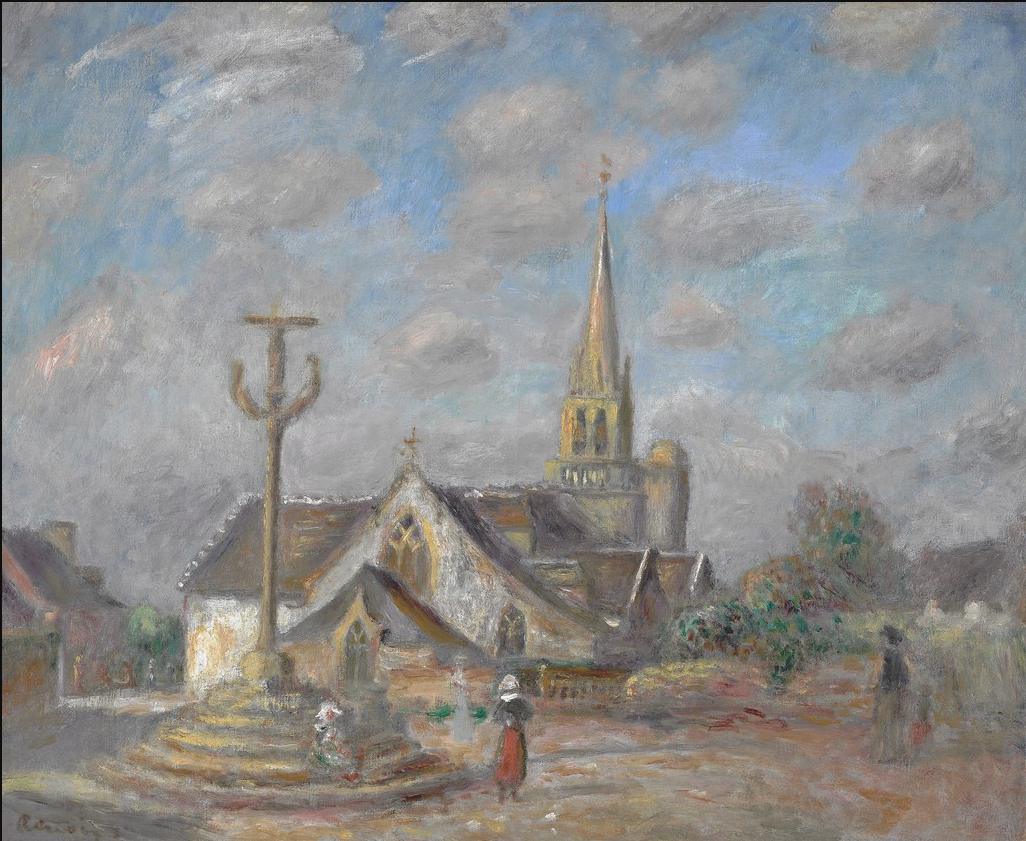Renoir, Pierre-Auguste (1841-1919)
Calvaire et église de Nizon, près de Pont-Aven (Calvary and Church at Nizon, near Pont-Aven)
c.1893
Oil on canvas, 39.4 cm x 47 cm
High Museum of Art, Atlanta
In 1879 Renoir spent the summer in the home of artist Paul Bérnard in Wagermont, a resort in northern France that he frequented in subsequent years for brief holiday periods. In the course of his travels throughout the Normandy and Brittany, Renoir became fascinated by the unique landscape and architectural elements.
The imposing, vertical structure at the center of the present painting, called a calvary or calvaire, is a feature characteristic of many Breton villages, and one that many artists paused to capture, including Paul Gauguin in 1889 when he painted the powerful Le Christ vert ou Calvaire breton (collection Musée Royaux des Beaux-Arts, Brussels). A calvary is a type of monumental public crucifix, sometimes encased in an open shrine, and is most commonly found across northern France from Brittany through Belgium.
Interestingly, such wayside calvaries erected at the junction of routes and tracks functioned both as navigation devices and objects of veneration, and “since medieval times they have fixed the landscape, symbolically acquiring it for the Christian faith, in the same way that, previously, Megalithic monuments marked prehistoric landscapes according to presumed religious and ideological imperatives” (Nicholas Saunders quoted in “Crucifix, Calvary, and Cross: Materiality and Spirituality in Great War Landscapes,” World Archaeology 35.1, June 2003, p. 9). The Breton calvaire is distinguished from a simple cross by the inclusion of three-dimensional figures surrounding the Crucifixion itself, typically representing Mary and the apostles of Jesus, though later saints and symbolic figures may also be depicted.
In the present painting Renoir has bathed the church and its austere forms in the warm, golden light of a summer day, the blue sky brushed with soft clouds. The artist has caressed the forms without defining them clearly, and in fact appears to deliberately omit essential to description of the minor details, focusing attention on the overall landscape and in particular the contrast between the brightness of the sky and the shadow that surrounds the village. (Christie’s)
